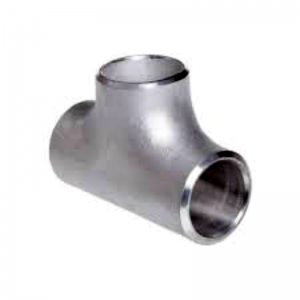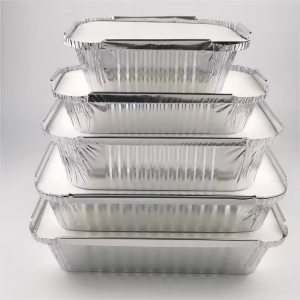Introduction to 6000 Series Aluminum Alloy
The 6000 series aluminum alloy, part of the aluminum-magnesium-silicon family, is renowned for its balanced strength, formability, and corrosion resistance. Widely used in structural and architectural applications, it includes popular grades like 6061, 6063, and 6082. This article delves into its unique properties, industry applications, and tips for selecting the best alloy for your project.
Composition and Key Properties
1. Chemical Composition
The 6000 series primarily combines:
- Magnesium (Mg): Enhances strength and workability.
- Silicon (Si): Improves heat resistance and castability.
- Minor additives like copper (Cu) and chromium (Cr) for specialized performance.
Example:
- 6061 Aluminum: Mg (1.0%), Si (0.6%), Cu (0.25%), Cr (0.2%).
- 6063 Aluminum: Mg (0.7%), Si (0.4%)—ideal for extrusion.
2. Mechanical Properties
- Tensile Strength: 125–310 MPa (depending on tempering).
- Yield Strength: 55–276 MPa.
- Elongation: 8–25% (excellent ductility).
- Hardness: 60–95 HB (softer than 7000 series but easier to machine).
3. Heat Treatment
6000 series alloys are heat-treatable (T4, T6 tempers):
- Solution Heat Treatment: Heated to 530°C (986°F), then quenched.
- Artificial Aging: Aged at 160–180°C (320–356°F) to achieve peak hardness.
Top Benefits of 6000 Series Aluminum
1. High Strength-to-Weight Ratio
- Comparable to mild steel but 67% lighter, ideal for aerospace and automotive lightweighting.
- 6061-T6: Ultimate tensile strength of 310 MPa—used in aircraft wing components.
2. Superior Corrosion Resistance
- Naturally forms a protective oxide layer.
- Performs well in humid, marine, and industrial environments (e.g., shipbuilding, bridges).
3. Excellent Machinability and Weldability
- Easily extruded, bent, or CNC-machined (6063 is the "architectural alloy" for complex shapes).
- Compatible with TIG, MIG, and friction-stir welding.
4. Aesthetic Versatility
- Accepts anodizing, powder coating, and polishing for architectural façades or consumer products.
5. Recyclability
- Retains 95% of its properties after recycling, aligning with circular economy goals.
Common Grades and Their Applications
| Grade | Key Features | Applications |
|---|---|---|
| 6061 | High strength, good toughness | Aircraft parts, bicycle frames, pipelines |
| 6063 | Superior extrusion, smooth surface | Window frames, door systems, LED heat sinks |
| 6082 | Higher strength than 6061 | Bridges, cranes, marine structures |
| 6005A | Enhanced formability | Automotive trim, railings |
6000 Series vs. Other Aluminum Alloys
| Feature | 6000 Series | 5000 Series | 7000 Series |
|---|---|---|---|
| Primary Elements | Mg + Si | Mg | Zn + Mg |
| Strength | Moderate to high | Moderate | Very high |
| Weldability | Excellent | Good | Poor (requires specialized techniques) |
| Cost | Moderate | Low | High |
| Typical Use | Structural components | Marine applications | Aerospace/defense |
Industry Applications
1. Construction & Architecture
- Window and Door Frames: 6063’s smooth finish and corrosion resistance make it ideal.
- Roofing and Cladding: 6061 sheets for durability in harsh weather.
2. Automotive
- Body Panels: Lightweight 6005A reduces vehicle weight for better fuel efficiency.
- Chassis Components: 6061-T6 for high-stress parts like suspension arms.
3. Aerospace
- Wing Spars and Fuselage: 6061’s strength-to-weight ratio meets FAA standards.
4. Consumer Goods
- Electronics: 6063 heat sinks in laptops and LED lighting.
- Sporting Equipment: Bicycle frames (6061) and baseball bats.
How to Choose the Right 6000 Series Alloy
- Define Load Requirements:
- 6061 for heavy loads; 6063 for decorative, low-stress parts.
- Consider Fabrication Needs:
- 6063 for complex extrusions; 6082 for welding-intensive projects.
- Environment:
- Marine or chemical exposure? Opt for 6061 with anodizing.
- Budget:
- 6063 is cost-effective for mass production (e.g., window frames).
FAQ About 6000 Series Aluminum
Q1: Can 6000 series alloys be used in high-temperature environments?
Yes, but prolonged exposure above 150°C (302°F) may reduce strength.
Q2: How does 6061 compare to 6063?
6061 is stronger, while 6063 offers better surface finish and extrusion ease.
Q3: Is 6000 series aluminum food-safe?
Yes, grades like 6061 are FDA-compliant for kitchen equipment.
Q4: What’s the best finish for outdoor use?
Anodized or powder-coated finishes enhance corrosion resistance.
Why Partner with Us for 6000 Series Aluminum?
- Certified Quality: ASTM, EN, and ISO standards.
- Custom Sizing: Sheets, plates, bars, and extrusions cut to order.
- Global Shipping: Competitive rates for bulk orders.
- Technical Support: Alloy selection guidance and fabrication tips.









